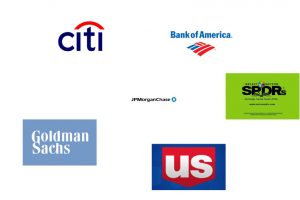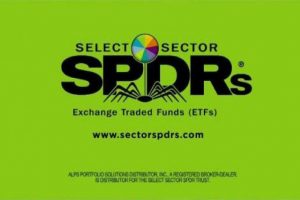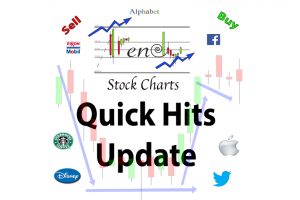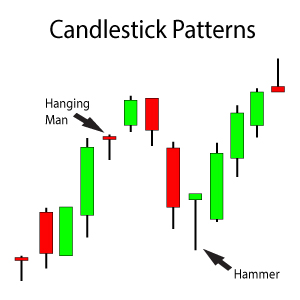The Federal Reserve Bank raised interest rates by 250 basis points last week. In percentage terms, that calculates to a .25% raise in the rate. Basis points terminology is widely used when talking about changes of less than one percent. As a result, this terminology is often used when discussing interest rate fluctuations. I prefer to use percentages myself as it is more clear. Not everyone understands “basis points”.
Anyways, what effect did the rise in interest rates have on the Financial Select Sector SPDR ETF (XLF)? This recent interest rate increase was an “expected” increase by the market. The market tends to take most things in stride, especially when they are already expected. Before analyzing shorter-term price activity for the index, I am going to look at a long-term chart from an Elliott wave perspective.
Financial Select Sector SPDR ETF (XLF)
Two months ago in the Idea Chamber I mentioned that I saw a trading range starting to develop for Financial Select Sector SPDR ETF (XLF). This first chart for the XLF is a 20 year monthly candlestick chart that I think will explain why I saw that trading range developing. The long-term chart indicates that a Bullish Impulse wave pattern that started in March 2009 finally finished developing and completed Wave 5 in January 2018. Take a look at my Elliott Wave breakdown on the chart.

Evaluating a Potential Bullish Impulse Wave Pattern That Developed From March 2009 Through January 2018
The blue lines on the chart represent Waves 1-5 of a Bullish Impulse wave pattern. Wave 5 of the pattern contains the extended wave pattern. I discuss what an extended wave pattern is in recent article for 3M Corporation titled “9/30/2018 – Stock Chart Analysis for 3M Corporation (MMM)”
When an extended wave pattern is identified[s2If !current_user_can(access_s2member_level1)]……
If you want to continue reading this article for the Financial Select Sector SPDR ETF (XLF), you must first login.
I discuss probable short-term and long-term action for the index. Shorter-term looks like a continued consolidation for the sector for the next 1-3 months while longer term looks like……
If you are not a Trendy Stock Charts member, consider joining today! There are several different subscription plans available.[/s2If][s2If current_user_can(access_s2member_level1)] in a larger Impulse wave pattern, there is a good chance the wave pattern is complete. There must be an extremely bullish situation for a stock to have 2 extended wave patterns within a single Impulse wave pattern. It can happen, but it is more rare than common.
I like to discuss the outcomes that statistically are more probable as there is a greater chance those will happen. So if the Bullish Impulse wave pattern is over, what can be anticipated? Probably more of the trading range I talked about in the Idea Chamber a couple months back.
XLF – Trading Range
Let’s jump back to a shorter-term chart now and take another look at the trading range again. The wave labeling you see is for the extended wave which developed in the blue Wave 5 on the 20 year chart above. When the extended wave appears in Wave 5 as it did for the XLF, the pullback is normally in the area of Wave 1 of the extended wave. That would be the lower gray shaded box.
But Wave 5 of the extended wave also appears to have developed into an extended wave pattern (so did Wave 3). I placed a second gray box on the chart a little higher
This is a 4 year weekly candlestick chart for the Financial Select Sector SPDR ETF.

Analyzing 2 Different Support Areas for the Financial Select Sector SPDR ETF (XLF) on a 4 Year Weekly Candlestick Chart
The trading range is approximately $3.50 in width. A break to the upside or downside should travel approximately that same length. A break to the downside would put the XLF’s share price right at the bottom of the upper gray shaded box, or right at the $23 price level.
If the entire market is suffering, maybe the XLF does make it to the lower gray shaded box. But I also see support higher and a possibility that $23 is the low side of the pullback range.
XLF – Point & Figure
While I do not talk about the different patterns on Point & Figure Charts much, I do like to reference the charts to see what price targets they are reflecting based on the current “supply and demand”. Let’s see if there is more supply or demand at the moment.
High/Low P&F Chart – $52.50 Bullish Price Objective
Closing P&F Chart – $52.50 Bullish Price Objective
It appears there is more demand than supply at the current time. Based on my analysis above, I was definitely not expecting bullish price objectives with those high of targets. Do I need to re-analyze the charts above? Is there something I am missing?
I recall the time I analyzed HIMX back in June 2017. The P&F Charts indicated HIMX was going to zero. I made a comment that I never saw a zero price target on a stock prior to that. I also did not agree with the P&F Charts at that time. Maybe the P&F Charts are wrong again.
Or, just maybe, my analysis is correct and so is the P&F Chart. Let’s move on to the next section.
XLF – Cup With Handle Chart Pattern
This last chart is the same 20 year chart from above, but illustrated a little differently. Rather than Elliott Waves, I outlined what looks like a Cup pattern that has either formed or, as I think, is still forming a handle. For my pullback to the $23 price level scenario to play out, XLF’s share price should not make a new high during any continued push towards its previous high.

Analyzing a Cup With Handle Chart Pattern for Financial Select Sector SPDR ETF (XLF) on a 20 Year Monthly Candlestick Chart
Better performing Cups with Handles have right sides of the cup lower than the left side. Read more about the pattern here. Just like it is for the XLF. The average gain is 34% for a breakout. The final calculation would be performed when the handle looks fully developed. But for the XLF to reach the $52.50 price level identified by the P%F Charts, it is going to need a lot more than 34% to reach that price. It is going to need more like a double from here.
And that is something stocks like to do. Take a look back at AMD. After it reached the $15 and change area, it consolidated for a while. After that, what did it do? It doubled to $34. So I guess a double isn’t necessarily out of the question.
Financial Select Sector SPDR ETF (XLF) – Summary
The rising interest rates into the end of the year should bring the Financial Select Sector SPDR ETF back towards its highs from January 2018. However, I do not think that a Bullish Impulse wave pattern that took 9 years to complete will correct and breakout during its current rebound. Instead, a little patience may get you better entry prices for a potential breakout 3-4 more months down the road. And that better entry may give you a better dividend yield as well.
With some recent weakness this week in the NASDAQ Composite, maybe the move towards $23 is already in motion.
If you are holding any bank stocks and wonder what its specific chart looks like, drop a request in the Idea Chamber or in the comments below!
[/s2If]














Ask a Question. Make a Comment. Leave a Reply.